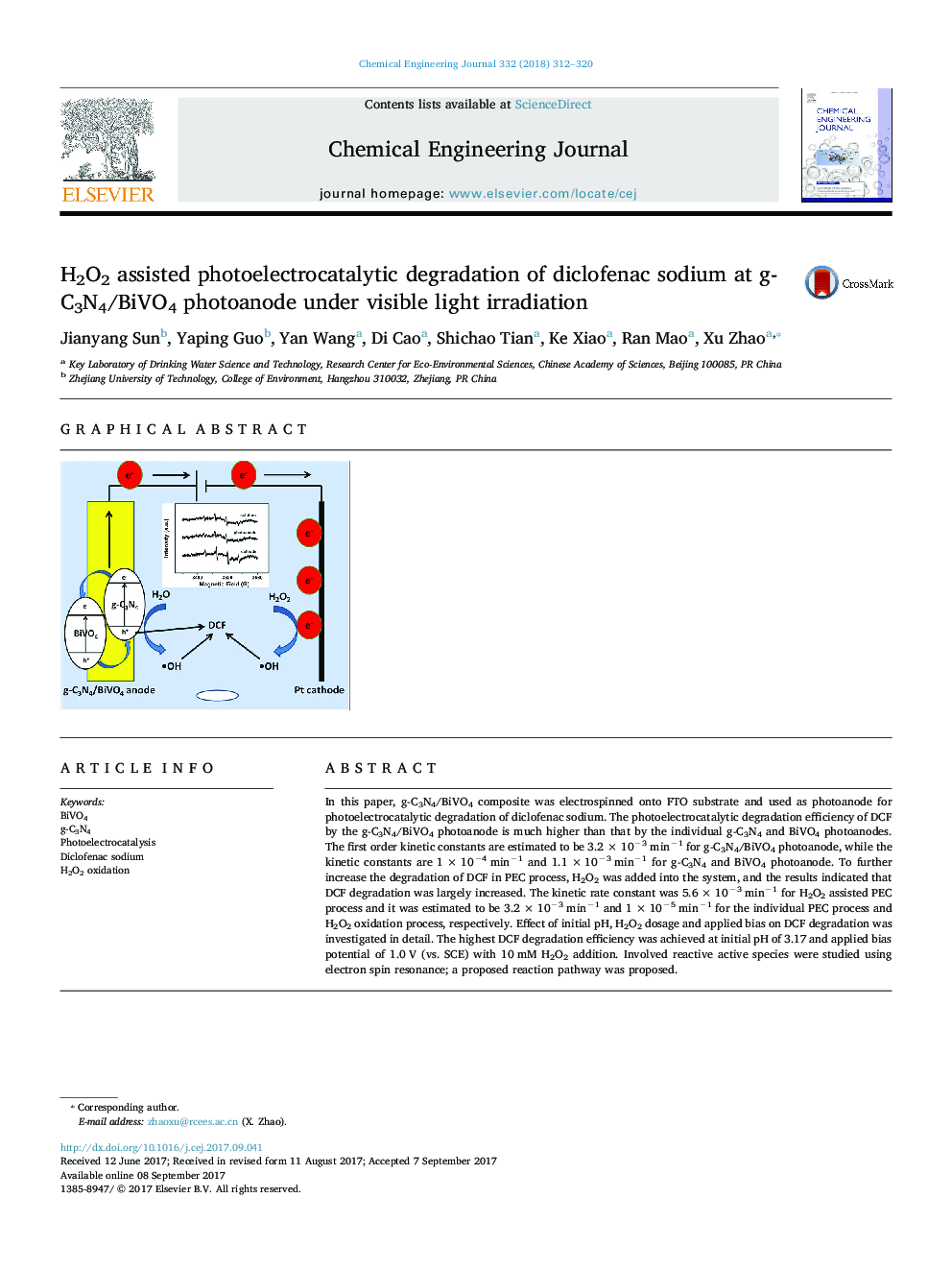| Article ID | Journal | Published Year | Pages | File Type |
|---|---|---|---|---|
| 6464882 | Chemical Engineering Journal | 2018 | 9 Pages |
â¢g-C3N4/BiVO4 composite photoanode was prepared by electrospinning method.â¢g-C3N4/BiVO4 photoanode exhibited a higher activity than g-C3N4 or BiVO4 photoanode.â¢Added H2O2 enhanced the photoelectrocatalytic oxidation of diclofenac efficiently.â¢The main active species in the PEC system were determined to be OH and O2â.
In this paper, g-C3N4/BiVO4 composite was electrospinned onto FTO substrate and used as photoanode for photoelectrocatalytic degradation of diclofenac sodium. The photoelectrocatalytic degradation efficiency of DCF by the g-C3N4/BiVO4 photoanode is much higher than that by the individual g-C3N4 and BiVO4 photoanodes. The first order kinetic constants are estimated to be 3.2Â ÃÂ 10â3Â minâ1 for g-C3N4/BiVO4 photoanode, while the kinetic constants are 1Â ÃÂ 10â4Â minâ1 and 1.1Â ÃÂ 10â3Â minâ1 for g-C3N4 and BiVO4 photoanode. To further increase the degradation of DCF in PEC process, H2O2 was added into the system, and the results indicated that DCF degradation was largely increased. The kinetic rate constant was 5.6Â ÃÂ 10â3Â minâ1 for H2O2 assisted PEC process and it was estimated to be 3.2Â ÃÂ 10â3Â minâ1 and 1Â ÃÂ 10â5Â minâ1 for the individual PEC process and H2O2 oxidation process, respectively. Effect of initial pH, H2O2 dosage and applied bias on DCF degradation was investigated in detail. The highest DCF degradation efficiency was achieved at initial pH of 3.17 and applied bias potential of 1.0Â V (vs. SCE) with 10Â mM H2O2 addition. Involved reactive active species were studied using electron spin resonance; a proposed reaction pathway was proposed.
Graphical abstractDownload high-res image (71KB)Download full-size image
